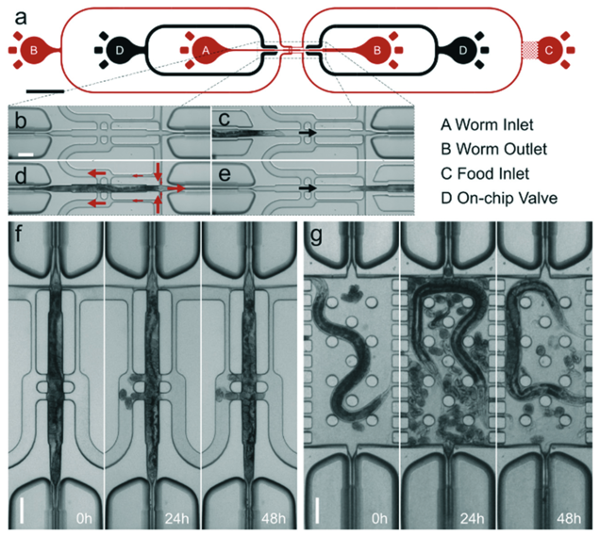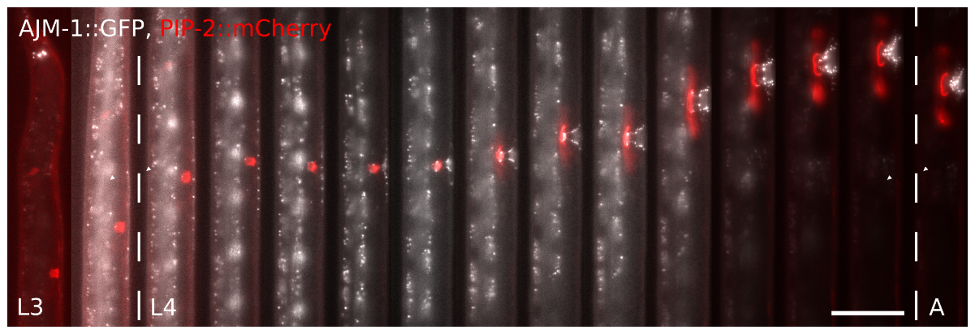Development of Microfluidics-based screening strategies

- microfluids (PNG, 455 KB)
- Adult C. elegans immobilization device.
Caenorhabditis elegans is a powerful model organism used to study a variety of fundamental biological processes, such as apoptosis (cell death), intercellular signaling, which controls cell proliferation and differentiation during development, or the events occurring during ageing.

- microfluids (PNG, 491 KB)
- Developing C. elegans larva over the course of 22.5 hours in a second generation long-term immobilization device.
Despite the many advantages Caenorhabditis elegans offers as an experimental system, progress has been limited by the lack of tools that permit the screening of large numbers of animals at single-cell resolution and allow the long-term immobilization of animals for time-lapse microscopy. We are therefore developing microfluidic devices capable of imaging the same animal across multiple larval stages in a parallelized format.
With our devices, we can screen large numbers of animals, perform high-resolution imaging over time and reconstruct three-dimensional features. Using microfluidic chips, we have been able to observe the entire process of vulval development or follow individual germ cells undergoing apoptosis.
Key publications
Berger, Simon; Spiri, Silvan; deMello, Andrew; Hajnal, Alex
Development. 2021 July 15
Long-term C. elegans immobilization enables high resolution developmental studies in vivo.
Berger S, Lattmann E, Aegerter-Wilmsen T, Hengartner M, Hajnal A, deMello A, Casadevall i Solvas X.
Lab Chip. 2018 May 1

